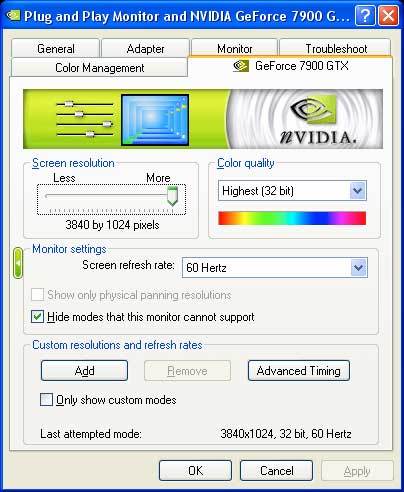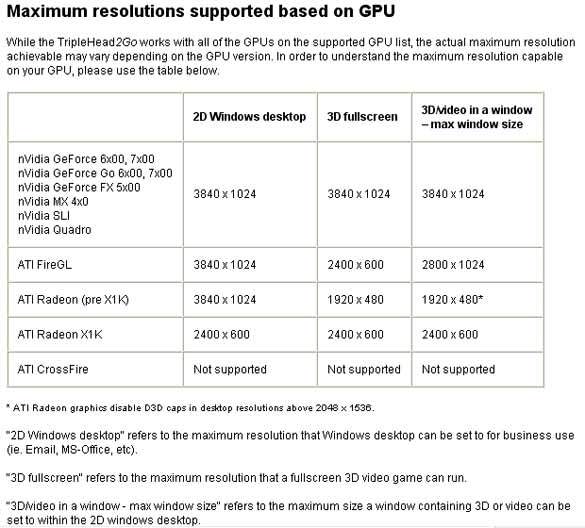Can Matrox's TripleHead2Go Span Fun Across Three Displays?
Compatibility
Now you know what comes in the package, but the big question is: can your system support it? For those of you who are intrigued by the idea of employing spare monitors for something useful, or who like the idea of multiple displays to "surround" yourselves for the ultimate gaming experience, you should check the Matrox website first. There is a tool you can download that will determine if your graphics card is capable of supporting the TripleHead2Go.
And this is not the only step you should take, because not all graphics hardware can support all of the features of the TripleHead2Go. As we discussed, there are two ways to utilize the device: desktop 2D applications and 3D gaming. While everything from Nvidia's GeForce 4 series and up can render both 2D and 3D at full screen at the maximum resolution of 3840x1024, ATI cards are not as fortunate; there are various exceptions and rules. The chart below explains these differences.
Unfortunately, ATI's high-end CrossFire multiple-GPU solution is not even supported by the TripleHead2Go. Nvidia's SLI, however, is fully supported, so the dual graphics option really makes sense for those looking to keep frame rates high at up to 3840x1024 - you are talking about a lot of pixels to process. A resolution of 1024x768 is only 786,432 pixels per frame, but at 3840x1024 that number jumps to 3,932,160 pixels. A 30" Dell or Apple Cinema display at 2560x1600 is 4,096,000 pixels, which is only 163,840 or 4% more than what the TripleHead2Go can demand from the graphics card. Either way that is a lot to ask from a graphics card and can seriously hinder performance if you are looking for high frame rates.
Get Tom's Hardware's best news and in-depth reviews, straight to your inbox.

